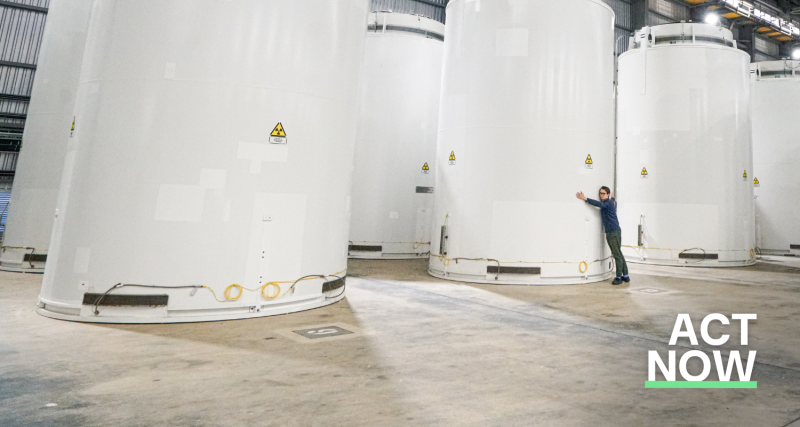The UK’s used nuclear fuel contains enormous amounts of energy – by our calculations enough to power the whole country for almost 2,500 years at current rates of consumption!*
But the government has announced plans to put the spent plutonium stockpile at Sellafield “beyond reach" and ready it for permanent disposal deep underground.
It's a horrifying waste of a national asset, but we still have a chance to save it.
The Nuclear Decommissioning Authority -- the agency that manages our spent fuel -- has just launched a call for public views on their strategy. This is a chance to send a clear message that the public wants energy policies that secure our clean future, not wanton waste. But we need people across the country to join the call.
With fast breeder reactors, this plutonium could be recycled into new fuel that provides clean, reliable energy to millions of homes. By trying to trim costs now, the government is literally chucking away precious energy resources.
Scientists and unions have been calling on the government to recycle spent fuel, not waste it. Let’s add our voices – sign the petition.
-----------------------------------------------------
*Sounds improbable? Here's how we did the numbers.
First we had to find out how much spent fuel and plutonium the UK holds. These figures come from the 2019 UK Radioactive Material Inventory [1]:
Plutonium: 112 tHM (tonnes heavy metal, i.e. not counting other aspects of the fuel such as oxides)
Uranium (depleted uranium, low-enriched U or natural): 99,000 tHM
Spent fuel from reactors: 6,100 tHM
Total: 105,212 tHM.
We consider these different metals, fertile or fissile, as interchangeable as they can all be burned as fuel in a new generation of fast neutron reactors. Next, we need to find out how much energy this amount of fuel can produce. Nuclear physics sources put this energy release from the fission of atomic nuclei at about 80 TJ (terajoules) per kg. This applies roughly equally to all nuclear fuels, including thorium, uranium, plutonium and other actinides in spent fuel.
We need to convert the units next.
80TJ = 22 GWh [3]. That's for each kg. So each tonne gives 22,000 GWh.
For the UK we have 105,212 tonnes of fuel, giving 2,314,664,000 GWh of heat.
However, heat does not convert directly to electricity - the efficiency is roughly a third. This gives 771 million GWh of electricity = 771,000 TWh. The UK's electricity use per year is about 316 TWh [4].
To find the number of years this can run the UK for at current electricity use, 771,000 / 316 = 2,440 years.
There are lots of caveats to this - it's a back of an envelope calculation based on a different generation of reactors from those we currently use. We give much more detail about the methodology in our What a Waste Report [5], which performs a similar exercise for Europe.
References:
[1] UK figures from https://ukinventory.nda.gov.uk/wp-content/uploads/2020/01/2019-Materials-Report-Final.pdf
[2] https://www.whatisnuclear.com/energy-density.html for MJ/kg, given at about 80,000,000 MJ/kg. According to the World Nuclear Association's page on the physics of nuclear energy, the energy released in fission of an atomic nucleus is 82 TJ/kg.
[3] IEA units converter. https://www.iea.org/data-and-statistics/data-tools/unit-converter 1 TJ = 0.278 GWh.
[4] Statista. (2018). Total electricity demand UK 2000-2018 | Statista. Statista; Statista. https://www.statista.com/statistics/323381/total-demand-for-electricity-in-the-united-kingdom-uk/
[5] What a Waste report, WePlanet, April 2023. https://www.weplanet.org/_files/ugd/dccfdc_cd3102ec02be4b35b810c531c4d472d5.pdf

